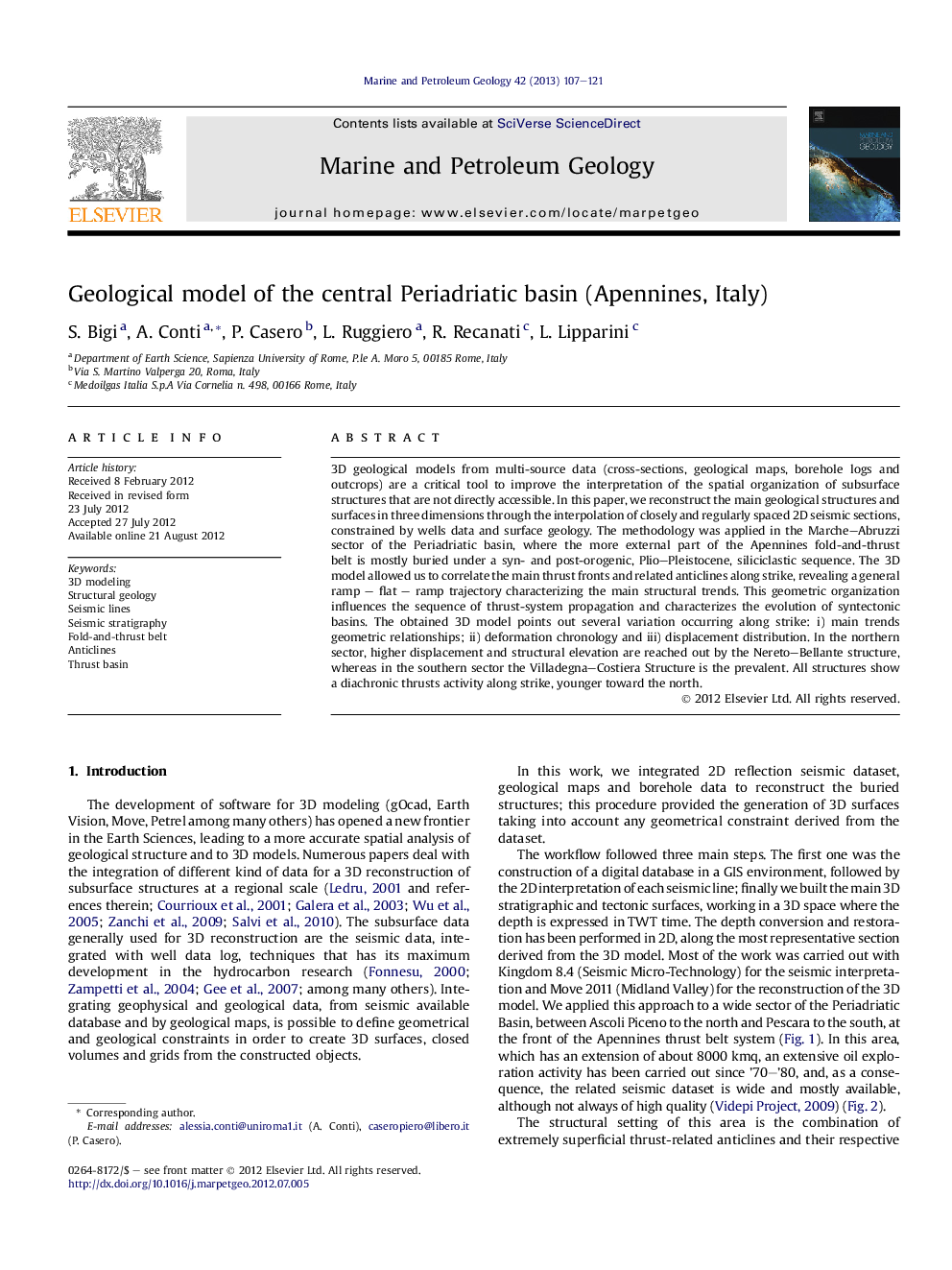| Article ID | Journal | Published Year | Pages | File Type |
|---|---|---|---|---|
| 4695729 | Marine and Petroleum Geology | 2013 | 15 Pages |
3D geological models from multi-source data (cross-sections, geological maps, borehole logs and outcrops) are a critical tool to improve the interpretation of the spatial organization of subsurface structures that are not directly accessible. In this paper, we reconstruct the main geological structures and surfaces in three dimensions through the interpolation of closely and regularly spaced 2D seismic sections, constrained by wells data and surface geology. The methodology was applied in the Marche–Abruzzi sector of the Periadriatic basin, where the more external part of the Apennines fold-and-thrust belt is mostly buried under a syn- and post-orogenic, Plio–Pleistocene, siliciclastic sequence. The 3D model allowed us to correlate the main thrust fronts and related anticlines along strike, revealing a general ramp – flat – ramp trajectory characterizing the main structural trends. This geometric organization influences the sequence of thrust-system propagation and characterizes the evolution of syntectonic basins. The obtained 3D model points out several variation occurring along strike: i) main trends geometric relationships; ii) deformation chronology and iii) displacement distribution. In the northern sector, higher displacement and structural elevation are reached out by the Nereto–Bellante structure, whereas in the southern sector the Villadegna–Costiera Structure is the prevalent. All structures show a diachronic thrusts activity along strike, younger toward the north.
► We constructed a 3D model representing the structural setting of a sector of the periadriatic basin. ► We used a 2D seismic lines dataset to construct structural and stratigraphic surfaces. ► We correlated the main thrust front through the basin.
